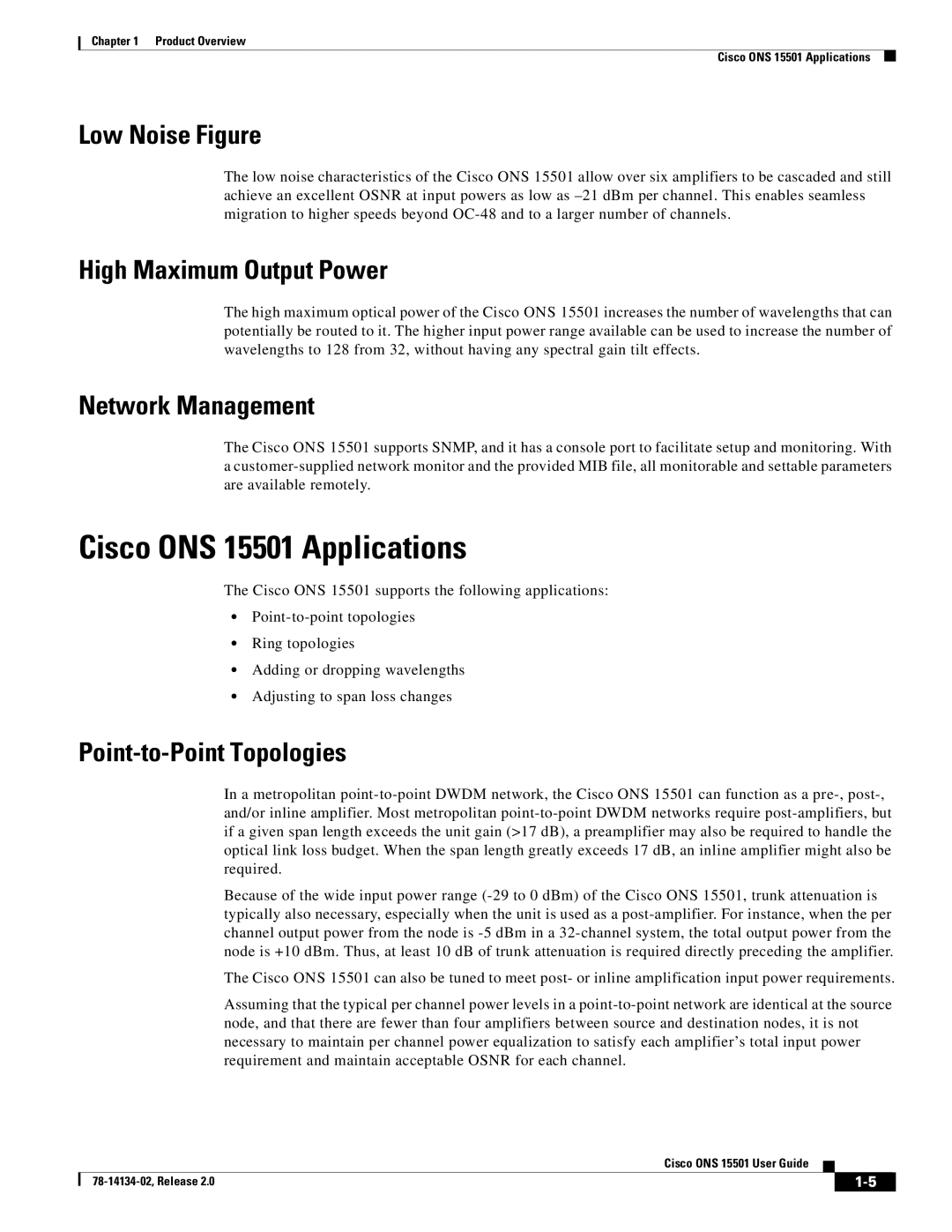Chapter 1 Product Overview
Cisco ONS 15501 Applications
Low Noise Figure
The low noise characteristics of the Cisco ONS 15501 allow over six amplifiers to be cascaded and still achieve an excellent OSNR at input powers as low as –21 dBm per channel. This enables seamless migration to higher speeds beyond OC-48 and to a larger number of channels.
High Maximum Output Power
The high maximum optical power of the Cisco ONS 15501 increases the number of wavelengths that can potentially be routed to it. The higher input power range available can be used to increase the number of wavelengths to 128 from 32, without having any spectral gain tilt effects.
Network Management
The Cisco ONS 15501 supports SNMP, and it has a console port to facilitate setup and monitoring. With a customer-supplied network monitor and the provided MIB file, all monitorable and settable parameters are available remotely.
Cisco ONS 15501 Applications
The Cisco ONS 15501 supports the following applications:
•Point-to-point topologies
•Ring topologies
•Adding or dropping wavelengths
•Adjusting to span loss changes
Point-to-Point Topologies
In a metropolitan point-to-point DWDM network, the Cisco ONS 15501 can function as a pre-, post-, and/or inline amplifier. Most metropolitan point-to-point DWDM networks require post-amplifiers, but if a given span length exceeds the unit gain (>17 dB), a preamplifier may also be required to handle the optical link loss budget. When the span length greatly exceeds 17 dB, an inline amplifier might also be required.
Because of the wide input power range (-29 to 0 dBm) of the Cisco ONS 15501, trunk attenuation is typically also necessary, especially when the unit is used as a post-amplifier. For instance, when the per channel output power from the node is -5 dBm in a 32-channel system, the total output power from the node is +10 dBm. Thus, at least 10 dB of trunk attenuation is required directly preceding the amplifier.
The Cisco ONS 15501 can also be tuned to meet post- or inline amplification input power requirements.
Assuming that the typical per channel power levels in a point-to-point network are identical at the source node, and that there are fewer than four amplifiers between source and destination nodes, it is not necessary to maintain per channel power equalization to satisfy each amplifier’s total input power requirement and maintain acceptable OSNR for each channel.
| | Cisco ONS 15501 User Guide | | |
| | |
| 78-14134-02, Release 2.0 | | | 1-5 | |
| | | |
